Mount Hood National Forest:max_bytes(150000):strip_icc():format(webp)/sunset-at-trillium-lake-and-mount-hood-reflections-1088019218-21df5caad73a490facc67233b0e52458.jpg) Thomas Goebel / Getty ImagesMt Hood National Forest, Oregon 97028, USA
Thomas Goebel / Getty ImagesMt Hood National Forest, Oregon 97028, USA
While Oregon is blessed with thousands of peaks, none are as famous as Mount Hood. And that’s not just because the exterior of its iconic Timberline Lodge was featured prominently in “The Shining.”
Oregon’s highest peak—which towers above the Cascade Range at 11,239 feet—overlooks a million acres of evergreen national forest. In the colder months, you can go for top-notch skiing, snowboarding, and cross-country skiing. The rest of the year, head to the mountain for countless hikes through lush forests, and lake swims at postcard-perfect Trillium and Mirror lakes.
Post-hike or après-ski, sate your appetite with pizza or beer at Timberline’s Ram’s Head Bar, or at one of the restaurants or breweries in the small ski town of Government Camp.
Ecola State Park:max_bytes(150000):strip_icc():format(webp)/man-looking-at-view--ecola-state-park--cannon-beach--oregon--usa--1194354722-876d9cd8394848e5aa0cb9d9f8aeebfb.jpg) Francesco Vaninetti Photo / Getty ImagesCannon Beach, OR 97110, USAPHONE +1 503-812-0650
Francesco Vaninetti Photo / Getty ImagesCannon Beach, OR 97110, USAPHONE +1 503-812-0650
There are so many epic viewpoints on Oregon’s dramatic and dreamy coast. And thanks to a 1967 beach bill that earned it the nickname “The People’s Coast,” each and every one of the state’s 363 miles of wild seacoast is open to the public.
But one of the most breathtaking places to take in the state’s rugged beauty has to be Ecola State Park. Stretching for 9 miles between Cannon Beach (home to the iconic Haystack Rock) and the town of Seaside, the drama unfolds the moment you turn into the park. After driving or biking through a few miles of serene Sitka spruce forest, the view opens to reveal a grassy bluff with panoramic views of the sparkling Pacific.
Whether you stroll out to the lookouts to marvel at the sea stacks, lunch at a picnic table, hike down to Indian Beach to surf or check out the tide pools, or try to spot some of the area’s elk or eagles, you’ll be following in the footsteps of the Lewis and Clark expedition. These are the same vistas that inspired Captain William Clark to write in 1806: “I behold the grandest and most pleasing prospect which my eyes ever surveyed.”
Crater Lake National Park
Shunyu Fan
Dubbed one of the Seven Wonders of Oregon, this majestic 1,943-foot-deep lake in southwestern Oregon is not only the single deepest lake in the country, it’s also one of the clearest, bluest, and most strikingly beautiful on the planet.
Encircled by 2,000-foot-high cliffs, the unusual body of water first came into being when the 12,000-foot-tall Mount Mazama violently erupted nearly 8,000 years ago, causing the volcano to collapse inward and create a caldera. Wizard Island, a volcanic cinder cone, formed at its center, and over time, the caldera filled with water.
Visit the park from July through mid-September to traverse 100 miles of trails and enjoy the 33-mile Rim Drive’s 30 stunning overlooks in balmy weather. Or, go during the colder months to see the caldera beautifully frosted with snow. Just be sure to check the park’s website for information about road closures before you go; due to its high elevation and frequent storms rolling in from the Pacific, the park averages 41 feet of snow annually.
Smith Rock State Park
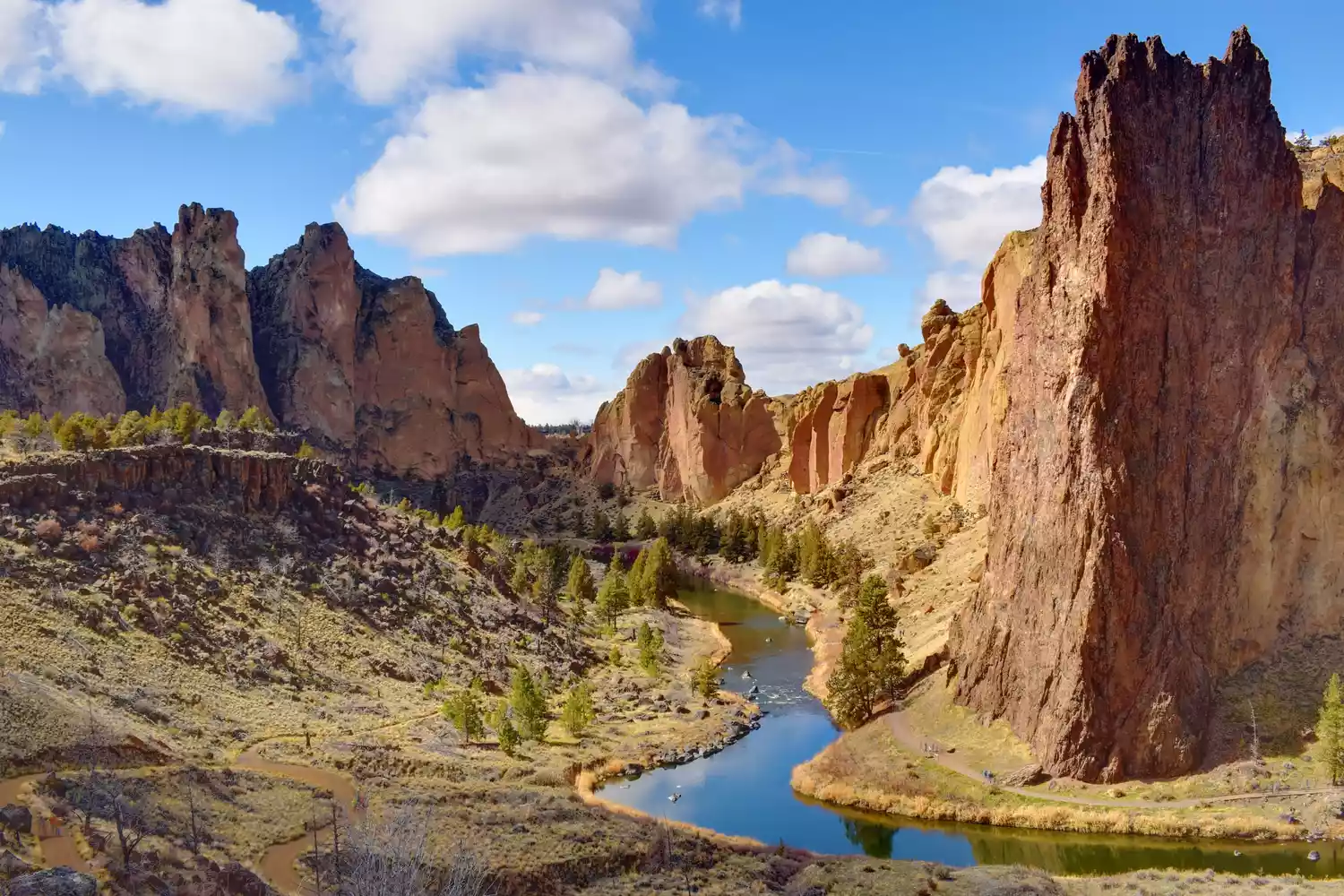
Kathy Weissgerber
The first time you see the towering red rocks of Smith Rock, you may wonder if you somehow got terribly lost and ended up in Utah or Arizona. Most people who haven’t visited Central Oregon—which has a high-desert climate and boasts an average of 300 sunny days per year—don’t know that the state can look like this.
Don’t be alarmed if you see climbers hanging off the sheer rock walls, or standing triumphantly atop Monkey Face, the 350-foot column with the distinctive round head, eyes, and nose of a primate. This is the destination for rock climbing in Oregon.
If you’re not a climber, you can still earn incredible 360-degree views of the scraggly desert landscape, Cascades, and the Crooked River basin by hiking the steep yet rewarding Misery Ridge Trail, a 2.5-mile, out-and-back trek to the top of the rock.
Columbia River Gorge National Scenic Area
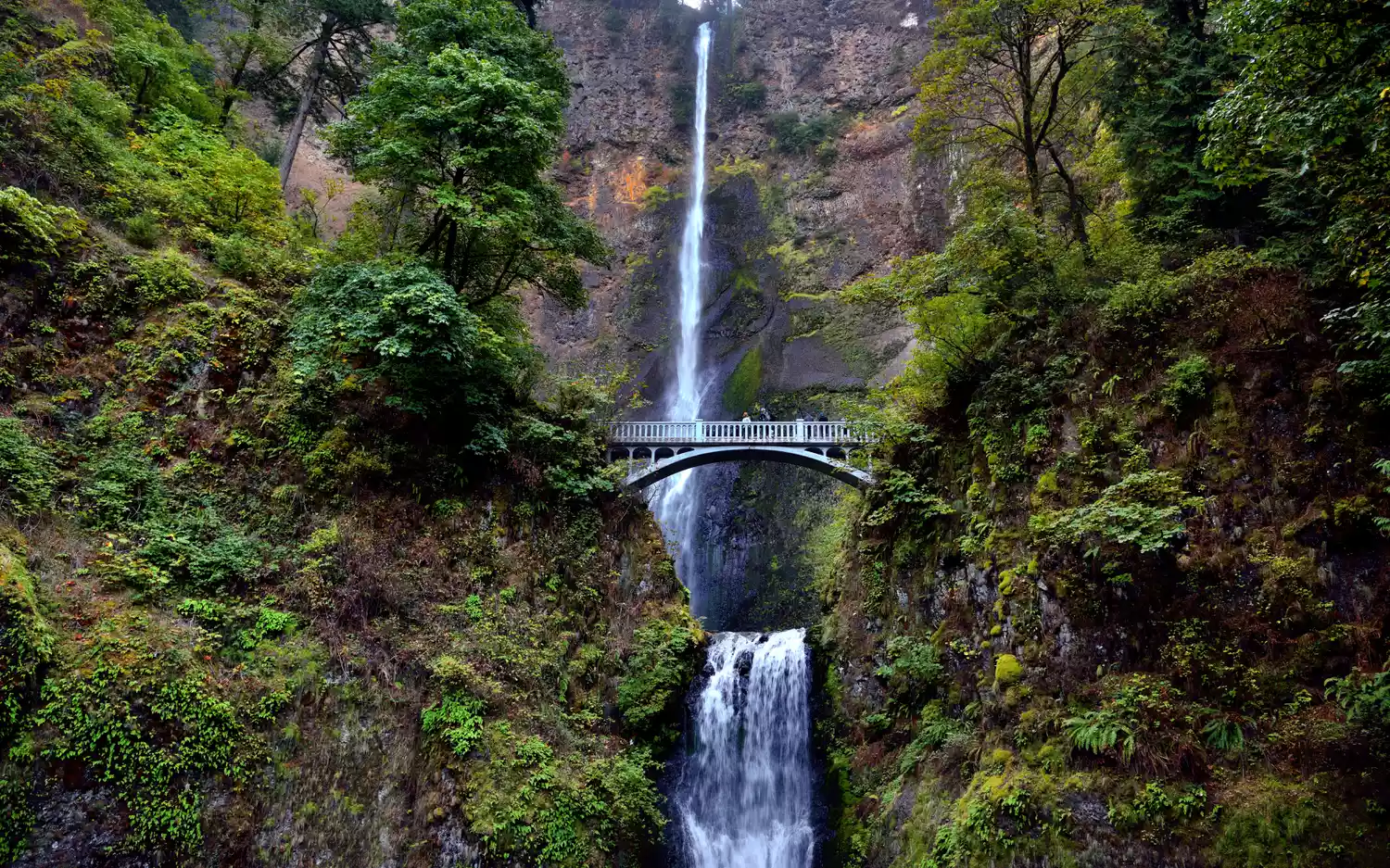
Mark C Stevens
The Painted Hills, John Day Fossil Beds National Monument
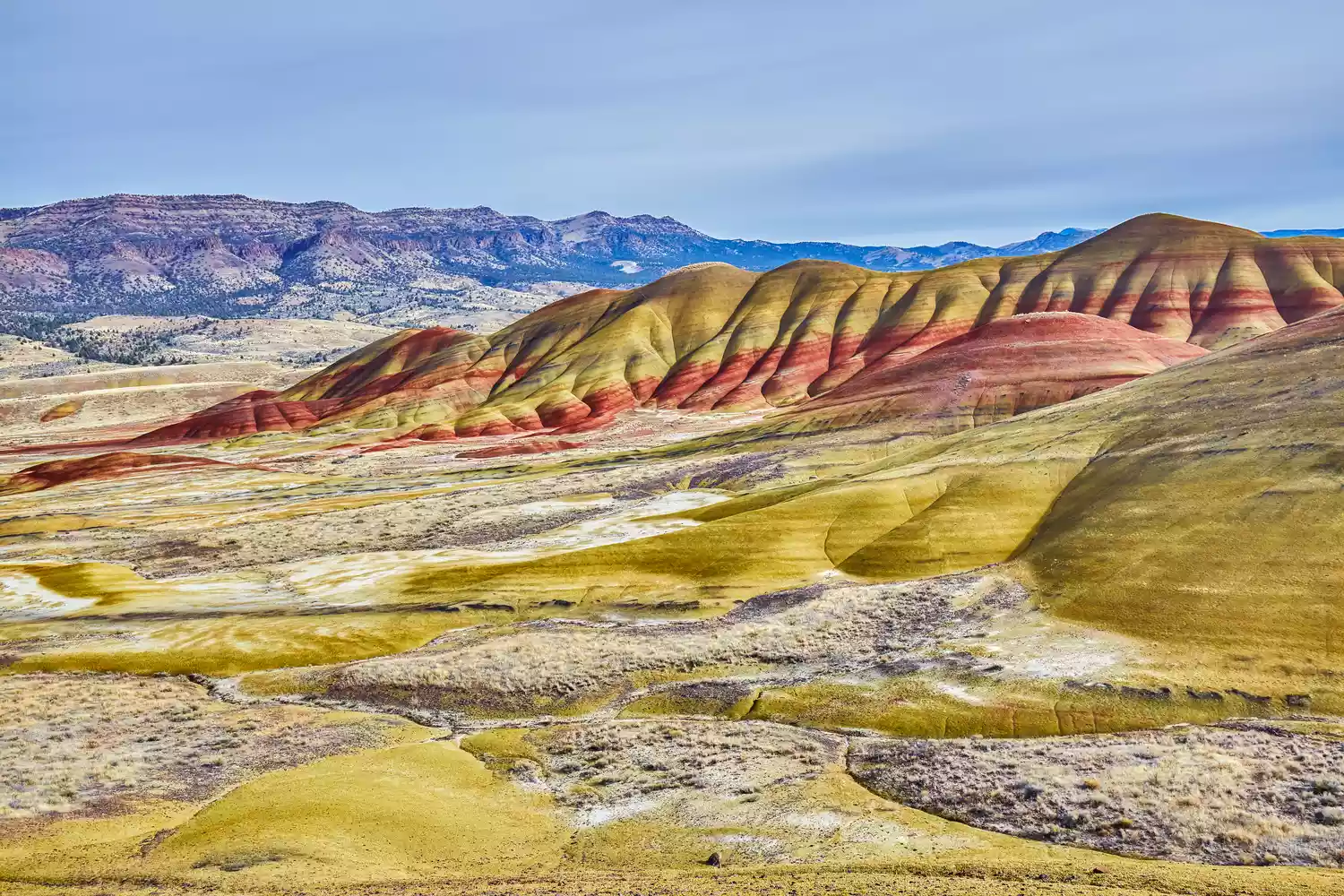
Peter Unger
You don’t have to hop a flight to Peru to see stunning striated rock formations that look like they were made using every color in a palette of vibrant watercolors. The Painted Hills—with their trippy layers of reds, yellows, oranges, greens, and purples—sit in Central Oregon, about 90 miles from the popular ski and resort city of Bend.
The best-known of three units that make up the John Day Fossil Beds, The Painted Hills is truly something to behold. Visitors take in the delicate landscapes via a series of overlooks, viewing platforms, and flat quarter-mile boardwalk loops.
But don’t make the rookie mistake of thinking this is a one-and-done destination. The rainbow-colored hills look different depending on the sun, light, recent precipitation, and other factors, so it’s ideal to make multiple visits—even on the same day.
Samuel H. Boardman State Scenic Corridor
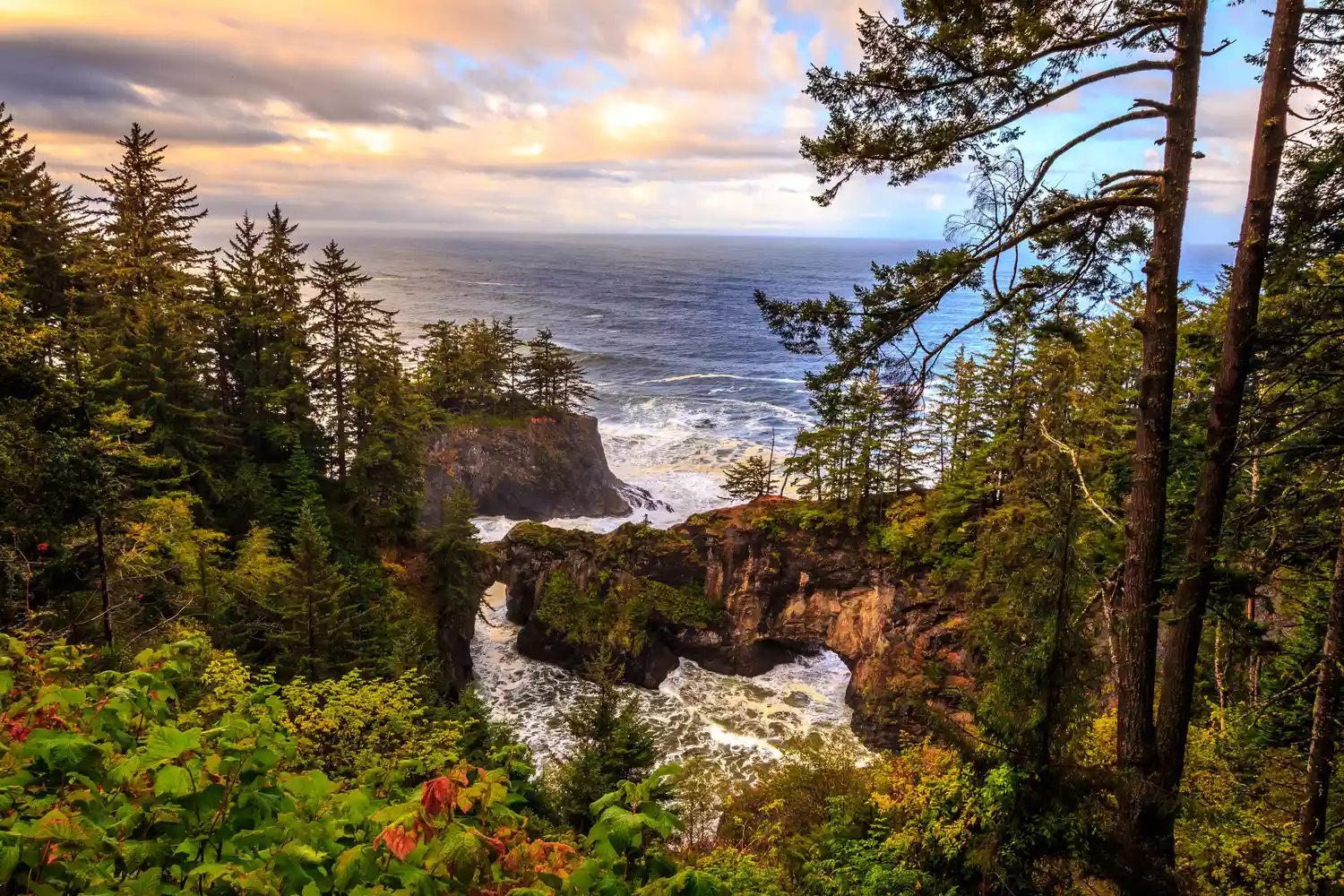
Bartfett
Stretching for 12 majestic miles between Brookings and Gold Beach just north of the California border, this gorgeous section of Highway 101 offers an embarrassment of riches, with one picturesque beach, overlook, picnic spot, and hiking trail after another. You won’t believe how much natural beauty you can see in just a dozen miles.
Highlights include secluded Secret Beach, dramatic Arch Rock, wide and sandy Whaleshead Beach, and the seven iconic rock formations punctuating Thunder Rock Cove at Natural Bridges. Cape Ferrelo Viewpoint is also a great spot for whale watching in the fall and spring, and for seeing the sun dissolve into the Pacific year-round.
Wallowa-Whitman National Forest
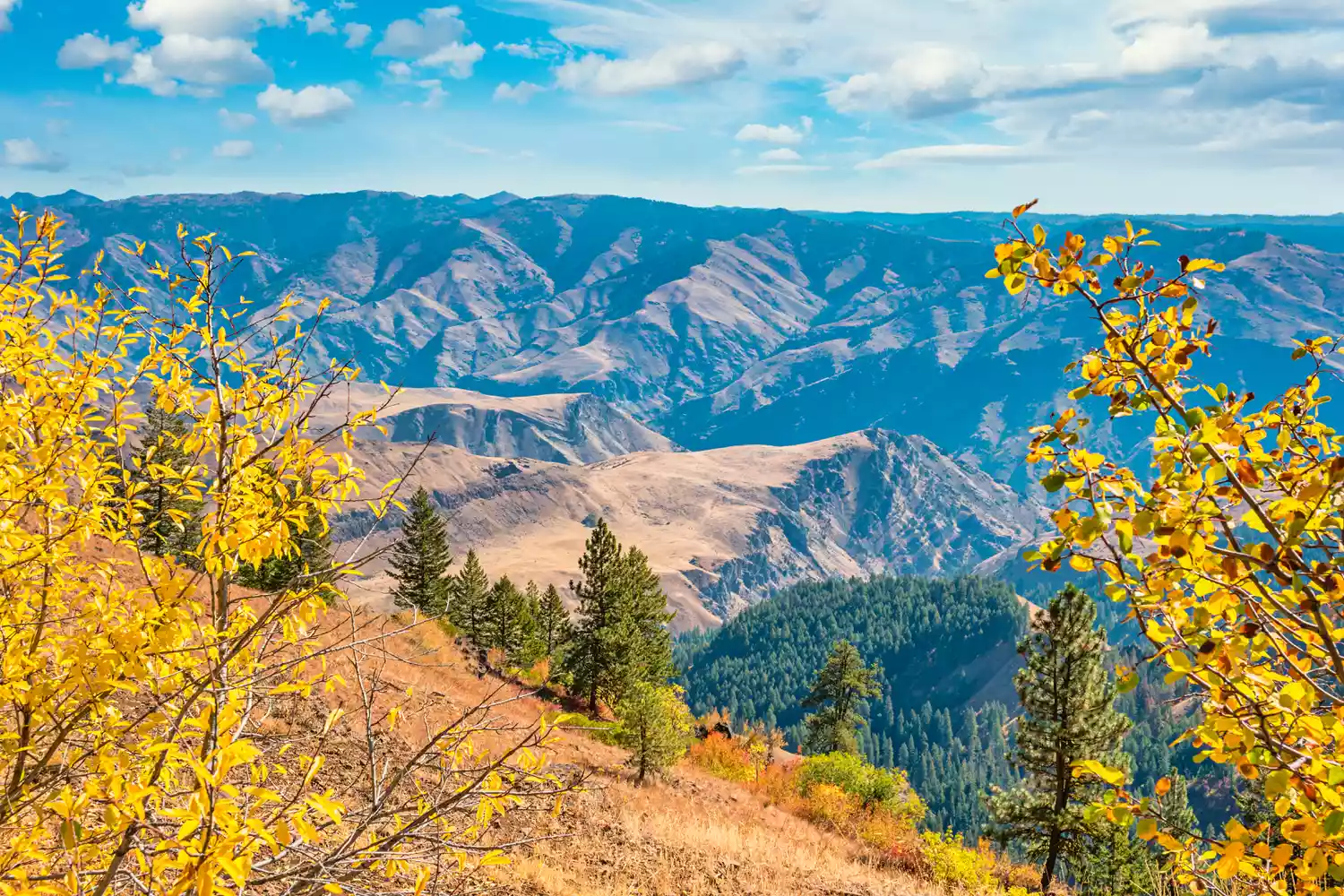
benedek
Ranging from the high Wallowa mountain peaks known as the “Swiss Alps of the Pacific Northwest” all the way to the depths of Hells Canyon National Recreation Area, this 2.4 million-acre wilderness area spanning northeastern Oregon and into western Idaho boasts amazing views from every elevation.
Go to explore idyllic alpine lakes, 10 Wild & Scenic-designated rivers, the vast and remote Eagle Cap Wilderness area, and picturesque canyons and grasslands surrounding the mighty Snake River. Just don’t miss the chance to take a gondola 3,700 feet up to the summit of Mount Howard on the Wallowa Lake Tramway for jaw-dropping panoramic views of the dramatic peaks and Wallowa Lake.
Oregon Dunes National Recreation Area

Don White
Sandboarding, off-roading, mountain biking, paddling, and e-biking: no matter how you like to get your adrenaline fix, you can get it on the Southern coast, at one of the world’s largest expanses of temperate coastal sand dunes.
This 31,500-acre portion of the Siuslaw National Forest stretches for 42 miles from Florence to Coos Bay, with contrasting landscapes of vast sand dunes, tree islands, beaches, forests, and wetlands. As you explore, keep an eye out for elk, bald eagles, and osprey inland, plus gray whales and sea lions just offshore.
Silver Falls State Park

By Kurt Stricker
Want to see 10 breathtaking waterfalls in just one relaxed hike? Head to Oregon’s largest state park near Salem to stroll the Trail of Ten Falls.
At the start of the trailhead, you’ll be introduced to the park with views of an awe-inspiring 100-plus foot waterfall. Do the entire 7.2-mile loop: an easy-to-moderate hike that will lead you behind the thundering curtains of four different waterfalls. Or, opt for shorter segments, meandering alongside rushing creeks, rocky canyons, and Doug Fir forests.
There are also 35 miles of backcountry trails that are perfect for more extended hikes, mountain biking, and horseback riding. The dog-friendly South Falls day-use area offers picnic areas, a playground, and horseshoe pits. Stay overnight by reserving a tent site or cabin at the park’s campground.
Source: https://t24hs.com








